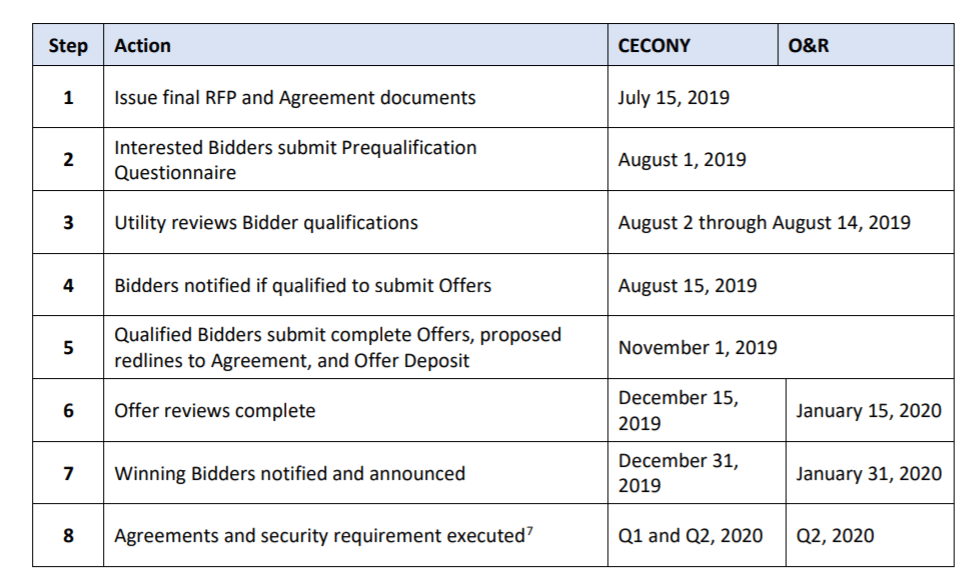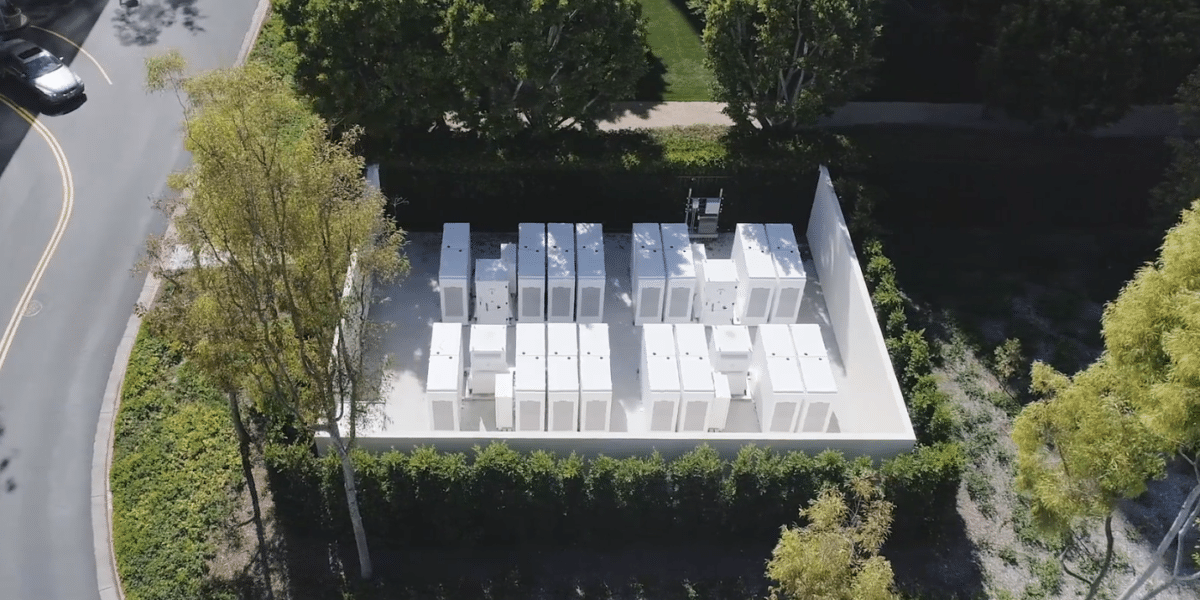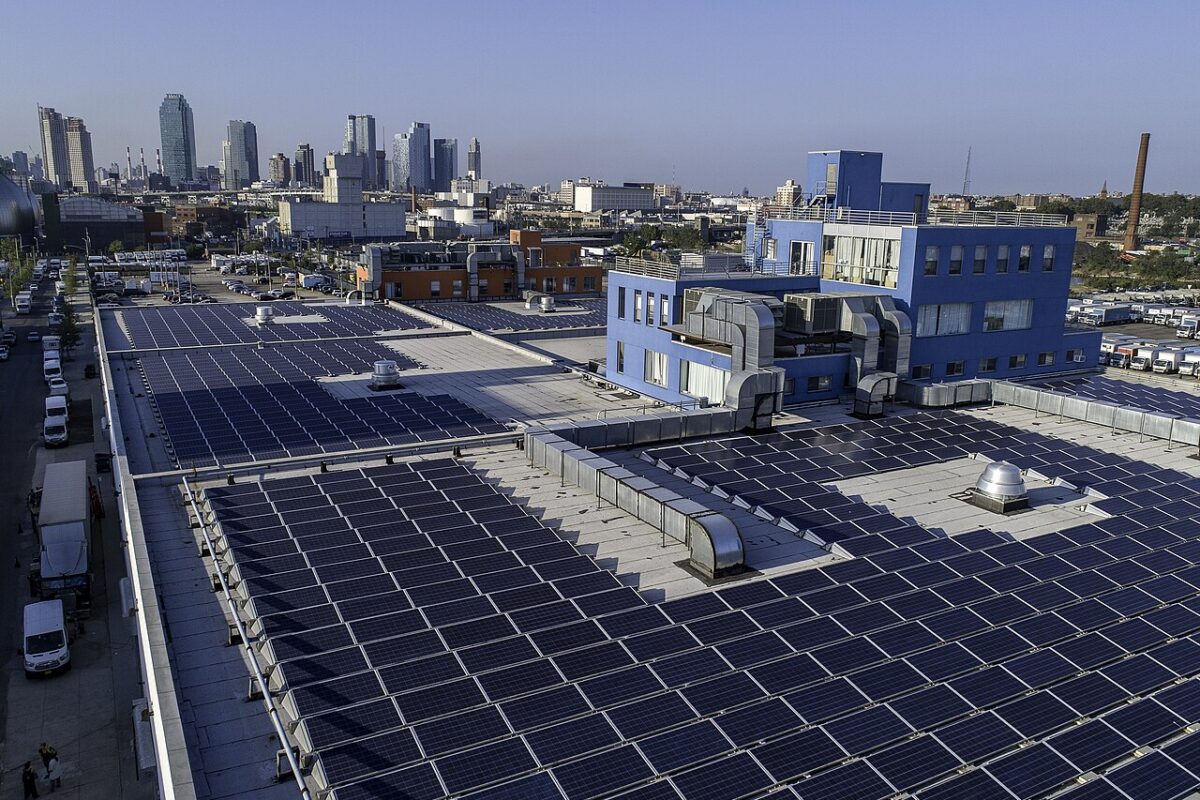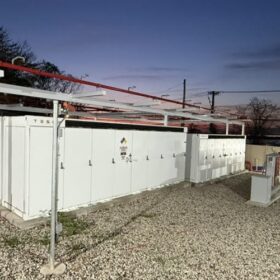A heatwave hit New York City on Saturday in a most visceral manner with powerlines catching fire, manhole fires breaking out, and transformers exploding into Monday. The city opened cooling centers and the Governor deployed state troopers to support efforts, as well as 100 generators and 50 light towers requested from the State Office of Emergency Management.
Then, Con Edison said it would take 30,000 customers offline Sunday evening, bringing them back online 500 at a time, to deal with the stresses of moving power through the city.
Consolidated Edison Company (ConEd) and its subdiriary, Orange and Rockland Utilities (O&R), have issued a Request for Proposals (RFP) for Bulk Energy Storage Scheduling and Dispatch Rights for 310 MW of of front of the meter energy storage. 300 MW / 4 Hours+ of the volume will be deployed in ConEd territory, while 10 MW will be deployed on O&R. The project must be operation by December 31, 2022 and are eligible for a New York State Energy Research and Development Authority Incentive.
Pre-qualified bidders will be required to submit their bids by November 1, 2019, with notification of winning bids announced at the end of December 2019, and January 2020.

The projects will be chosen via following formula based on its forecast of value, benefits, and pricing:
Quantitative Score = Net Market Value + Distribution Benefit + Environmental Benefit – Offer Price
Net Market Value = (Energy Value + Ancillary Services Value + Capacity Value) – (Charging Cost + NYISO Fees)
The document noted that for, “an energy storage resource to be considered in this RFP must be capable of acting as a standalone asset regardless whether it is co-located with a generation asset.” Bidders may propose terms up to and including seven years per the Public Service Commission Order.
The projects will be a NYISO Market Participant, while private parties will retain operational control of the assets, and are responsible for receiving real time dispatch signals/instructions from NYISO Market during the Agreement term. The utilities will be responsible for asset bidding, scheduling, and NYISO settlements during the Agreement term.
Approved bidders must show experience of 2 MW of deployed capacity, three years of audited financials, plus additional requirements.
In ConEd, projects must be greater than 5 MW, 10 MW in O&J, of Dispatchable Capacity at each location (i.e., not the result of aggregated smaller projects at different sites/locations), interconnected electrically within the respective utilities service territory and separately metered from any other load or generation at the site.
Over the agreement period projects must meet the following, plus other requirements, usage profile:
- Capability to operate at least 350 cycles per year, limited to one cycle per day
- Average state of charge of 50-80%
- Expected to be at 100% usable state of charge approximately 80 days of each year
- Maximum 2800 MWh Throughput per MW per year of Dispatchable Capacity maintained through the life of the Agreement
- Must maintain at least a 98 percent Availability for dispatch in each calendar year
- Must demonstrate a minimum Roundtrip Efficiency of 80% over the duration of the Agreement
- Must have a minimum Response Rate (or Ramp Rate) of at least 10% of the battery energy storage system’s Dispatchable Capacity per minute over the duration of the Agreement
- Must comply with NYISO tariff requirements for providing Voltage Support Services
These “non-wire” solutions could be just as revolutionary as solar power itself:
- Local solar power, energy storage and efficiency were shown to lower the need to upgrade transmission and distribution hardware in California by $2.6 billion in one recent period.
- Fourteen farms in Western Australia’s Esperance region will soon replace 54 kilometers of ageing wires and poles with 13 stand-alone Micro Power Systems solar and storage installations.
- Microgrid Knowledge noted the Brooklyn-Queens Demand Management (BQDM) Program, designed to delay a $1 billion substation, deployed at the the Marcus Garvey Village, a 625-unit apartment complex in Brooklyn. It includes a 300 kW energy storage system, a 400 kW solar photovoltaics (PV) system, and a 400 kW fuel cell.
- Eversource is planning a 1.7MW/7.1 MWh for $7 million versus building a $6 million 10-mile power line in New Hampshire for a population of just under 2,000 people who have experienced twenty blackouts over the past five years average ~2.5 hours. The battery will also save the town $2 million over its lifetime.
With all these things coupled with energy storage’s increasing flexible deployment abilities, increasing investment grade status, and increasing pipeline of projects, wild fires in California shutting down the power grid, and increasing opportunities – expect the deployment headlines to keep popping.
This content is protected by copyright and may not be reused. If you want to cooperate with us and would like to reuse some of our content, please contact: editors@pv-magazine.com.








“Expected to be at 100% usable state of charge approximately 80 days of each yeay”
You definitely aren’t Commercial Spell Check Guy. 😂
its early, im drinking the coffee
Are they setting up to test Doc Brown’s theory? Wonder where they got a flux-capacitor.
Nice, ConEd needs energy storage, what about the overloaded grid they NOW have in place? Did this heatwave just (mark) the areas that need energy storage constructed locally to avoid such incidences in the future?
So, does this mean ConEd will break up Brooklyn-Queens into a battery backed micro-grid as well as other boroughs?